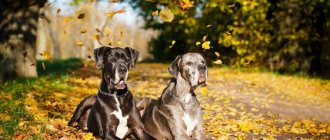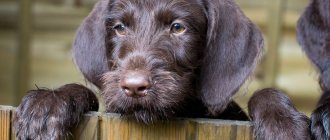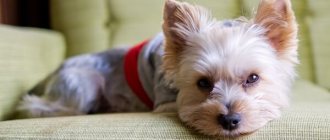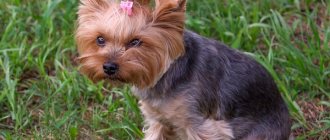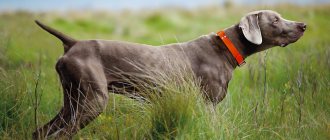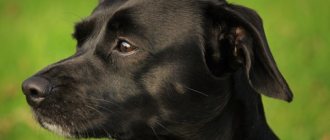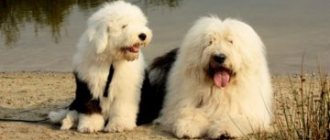The Mini Boxer is a hybrid dog breed that has recently become increasingly popular in North America. In our country, miniature boxers are not so often seen, but these unusual dogs have already gained their first fans. And there is a completely logical explanation for this.
Animals are socially open, devoted to their families, and get along well with younger family members. Dogs are sociable, ready to support their family in any endeavor, and take part in group activities. At the same time, small pets are ready to defend the family from ill-wishers and will always warn about possible danger. These are energetic and playful dogs that require early socialization and proper training. One of the disadvantages of these mestizos is that small dogs do not like to be alone for a long time.
Story
A direct relative of the German Boxer is the Small or Brabant Bulldog. This breed was specially bred by hunters. Until the 18th century in Europe, dogs participating in hunting were called “bullenbeisers” (“bull biters”). Such a dog grabbed the game that the hounds were chasing and held it until the owner arrived. Moreover, the dog had to hold the game so that it would not escape. The hunter himself finished off the game.
A good bulldog had a wide mouth with widely spaced teeth. Dogs with exactly these signs were used for further breeding. Even then, dogs had their ears and tails docked, since these were the most vulnerable places. Centuries-old selection has consolidated the necessary qualities for hunters. The new breed became known as the "boxer". Some individuals had a distinctive feature - a groove on the nose. It was these dogs that were considered true boxers.
Soon the Europeans had firearms, and public bullying was prohibited at the state level. Bullenbeiser was no longer needed. Butchers became interested in dogs, and they saved them from extinction. So the boxer turned from a hunting dog into a shepherd. In order to improve the dog for a new type of work, they began to pair him with an old English bulldog. After which the dog developed a large head, a wide body and white spots on its fur.
Photo of what the boxer looks like today:
Varieties
The most popular varieties of the breed include:
- "Bogle" - with the participation of Beagle;
- “Bopay” – with the participation of Sharpei;
- “Boxerman” – with the participation of Doberman;
- “Boxweiler” – with the participation of Rottweiler;
- "Bullboxer" - a representative of the "incomprehensible" breed with the participation of the French Bulldog;
- “Bullbox” – with the participation of Pit Bull;
- “Bullbocker Staff” – with the participation of the Staffordshire Terrier;
There's also a basset hound here
Plus Mastiff
For the most part, mixed breeds of German boxers receive a characteristic color and an elongated muzzle.
Differences from the French Bulldog
Some dog lovers often confuse the German Boxer with the French Bulldog. The French Bulldog is a medium-sized dog with a compact build.
It is characterized by standards as a proportionally built, short-haired animal with a large head with a short muzzle, large and erect ears. The tail is shortened, having characteristic and pronounced kinks.
Despite the external resemblance to a German boxer, the height of a bulldog at the withers does not exceed 34-35 cm , with a female weighing up to 12 kg , and a male weighing up to 15 kg .
Important! French bulldogs are inferior to German boxers in such parameters as trainability, territory defense, playfulness and behavioral breakdowns. However, the Bulldog is less aggressive towards strangers and more sociable.
Kinds
Often the types mean “German” and “American” boxer. This is not entirely true. The American breed of Boxers emerged after World War II, when American soldiers brought Boxer puppies from Germany. The breed becomes so popular that for many years it was included in the top 10 AKC breeds, and at one time the most common in the United States.
It is difficult for an uninitiated person to notice the difference between these 2 dogs: Germans are heavier built and have larger heads than Americans.
But with all this, this is one breed, and mixed breeds between them are considered purebred puppies.
Nutrition rules
In order to ensure proper nutrition for a German boxer, they are guided by the following simple recommendations from experienced breeders and veterinarians:
- the diet of an adult animal should contain one third of fresh meat and two thirds of grain crops with a small amount of iodized table salt;
- puppies and pregnant bitches eat natural food in the ratio of two-thirds meat products and one-third grain diet and homemade treats;
- food is provided daily at the same time, in sufficient portions, exclusively warm;
- After eating, it is not recommended to walk the dog for a couple of hours and it is advisable to limit the pet to outdoor games.
From one and a half to three months, the dog is provided with full four meals a day. From three months to a year, food is given three times a day, and after a year it is recommended to gradually transfer the four-legged pet to twice feeding. A positive result is achieved by using special, ready-made super-premium and premium food.
Important! It is necessary to exclude fatty pork, fresh chicken and turkey, river fish and sharp bones from the German boxer’s diet. You should not give your animal pickles, smoked foods, spices, or marinades. Legumes and sweet pastries are excluded from the four-legged pet's diet.
Description of the breed
The German Boxer is a dog above average height, strong, muscular, densely built, smooth-haired. Typically cropped ears and tail. The proportions of the body form a square.
Standard
Appearance - breed standard: morphological description
- The muzzle should not appear small, it is wide and voluminous.
- The head has a slight bulge at the top.
- The lower jaw protrudes 1.5 cm and is slightly curved upward, the lips hang down to the sides, the nose is slightly flattened and upturned (the tip is higher than the bridge of the nose), wide nostrils.
- The canines are well spaced and should not be visible when the mouth is closed. The tongue should also not be visible.
- The eyes are dark and not too small, the edging is black.
- ears should lie close to his cheekbones and hang forward. Set at the highest point of the head on the sides.
- The neck is strong, muscular and dry.
- of the chest is well developed , the depth is half the height at the withers, the ribs are arched.
- The skin is dry, elastic and without wrinkles.
- The limbs are well developed, smooth and straight.
Color
The German boxer has tiger and red colors of all shades - from light fawn to red. White spots should not occupy more than a third of the surface.
Brindle color in the photo:
The level of shedding in Boxers is average, dead fur is not too noticeable.
Dimensions
Males reach sizes at the withers from 57 to 63 cm, females - 53-59 cm. Average weight - 30 and 25 kg, respectively. The puppy is born with an average weight of 0.5 kg.
When properly developed, the dog should fit within the following range. Weight by month:
- 1 month – 3.5 kg.
- 2 months – 7.1-8 kg.
- 3 months – 11-12 kg.
- 4 months – 12-13 kg.
- 5 months – 14.3 kg.
- 6 months – 21-23.8 kg.
- 7 months – 25-30 kg.
Approximately how much will an adult weigh? From 23 - 30 kg.
Drooling
This breed has some physiological characteristics: snoring and drooling. Therefore, we do not advise dog breeders to train their dog to sleep in bed with you. Although some people even like these features.
Barking
An experienced dog owner can distinguish his needs by the Boxer's bark: a call to play, a demand for food, fear, etc. The dog will never bark for a long time. These dogs rarely howl. In any case, a howl is a request for help, both from a puppy and an adult dog.
A breed of dog similar to a miniature boxer
You need to distinguish a breed that is similar in appearance from mini boxers. A dog that looks like a boxer is called a Petit Brabançon dog (Brabant Griffon). Some representatives of this breed, bred in Belgium, have a red color. These animals are often jokingly called “mini boxers.”
Small dogs that look like a boxer look like a dog with a funny monkey face. You can read your pet's mood by their face. They are energetic and require the owner's attention. In this way they also resemble a smaller version of a boxer.
Peculiarities
Diseases
On average, with proper nutrition and good care, a Boxer can live 8-10 years, in some cases up to 15 years. Due to the fact that the German boxer is an artificially bred breed, it is susceptible to some congenital and acquired diseases:
- allergy,
- ulcerative colitis,
- inversion of eyelids,
- tumors on the skin,
- hip dysplasia,
- hypothyroidism (thyroid disease),
- congenital heart defect (in some individuals),
- leukemia,
- cancer.
The most common causes of death for these dogs are cancer and gastrointestinal diseases. In addition, this breed is prone to overeating and, as a result, obesity. Veterinarians are trying to combat these problems.
IMPORTANT. To prevent diseases, proper and balanced nutrition is necessary.
Today in stores you can find all types of food for different ages and breeds of dogs, including the German boxer. It is necessary to exclude all small tubular and chicken bones from the diet, as they will clog the esophagus.
If your pet is diagnosed with heart disease, then it is necessary to limit physical activity, despite the fact that it is important for this breed of dog.
If serious symptoms of the above diseases occur, contact your veterinarian. The veterinarian knows best what diet the dog needs to be prescribed and will prescribe medication. At 6 months of age, a puppy may develop a problem with the hip joints; if you show the baby to a doctor in time, you can avoid problems.
Ear cropping
It is important to consult with an experienced breeder or veterinarian before undertaking this operation. Cupping is done at the age of 2.5-3.5 months. Unfortunately, veterinarians often have no idea how to properly perform the procedure, so your puppy's appearance may be ruined. Take your choice of doctor seriously!
Be prepared for the fact that you will need to take care of your pet's ears for 10-12 months. In order for the ears to stand up beautifully, they need to be glued with adhesive tape to form cartilage and set the ears. After surgery, the puppy wears a post-op collar, and after 10 days the stitches are removed. The operation is performed under anesthesia, and the pet will not feel anything. But he needs to be prepared for the procedure.
A few rules:
- do not “walk” the puppy;
- do not feed 12 hours before surgery;
- the puppy must be healthy and not wormed;
- prepare your medications.
After surgery, let your pet sleep. As a rule, he will have a good appetite when he wakes up and can be fed immediately. But don't start playing with it. Let him sleep as long as possible.
Give him analgin for three days so that the dog does not shake his head. Do not tape the surgical suture under any circumstances. In the first days it must be treated with solcoseryl jelly. If sores form, treat with hydrogen peroxide and apply powder. You can use brilliant green or other drugs that promote healing.
On the left are undocked ears.
Treat regularly to prevent the ears from souring. As a rule, the suture heals within a week after the sutures are removed, and then the collar is removed. It is better to have ears that are initially not too long and thin, which is exactly what the standard provides.
Tail docking
Veterinarians recommend docking the tail at the age of 3-10 days. In a puppy, vertebral ossification has not yet occurred and sensitivity is lower than in adult dogs. These puppies undergo the procedure without anesthesia or stitches and are isolated from their mother. The wound heals faster if the mother does not lick the puppy.
From 10 days old, puppies undergo surgery under local anesthesia. 3-4 weeks - a tourniquet is applied, the blood stops flowing and the tail disappears. The older the dog, the more difficult it is to endure the operation.
Despite the fact that many experts claim that the puppy does not feel pain, this has not been scientifically proven. The dog still whines pitifully for 15 minutes after this operation.
The docking of the tail and ears is due to history. Since the dogs were hunting dogs, to reduce the risk of injury, their ears and tails were docked. Cupping is currently prohibited at the national level in some countries, such as Australia and much of Europe.
Today there is no need to crop the ears and tail of the German boxer. If you are getting a dog for your family, you can avoid injuring your pet. Dog breeders who plan to show their pets at exhibitions often resort to this procedure.
Health and illness
Boxers are not known for their good health. The list of pathologies to which they are predisposed is very extensive. Hearing problems are common in this breed. According to statistics, from 20 to 40% of puppies are born completely or partially deaf.
Other breed-specific diseases include:
- allergy;
- aortic stenosis;
- brachiocephalic syndrome;
- bloating;
- hip dysplasia;
- cardiomyopathy;
- hypothyroidism;
- gastrointestinal pathologies;
- conjunctivitis;
- demodicosis;
- entropion of the eyelid;
- dermatitis (including allergic);
- deforming spondylosis.
Caution: Boxers are prone to developing malignant tumors.
The risks of developing pathologies can be minimized with the help of a well-designed diet and annual examinations by a veterinarian, which make it possible to timely identify and stop the development of “breed” diseases.
Lifespan
The average life expectancy of a boxer is short - about 10 years . But in recent years, experts have noted an increase in the number of individuals surviving up to fifteen years of age. This is due to the fact that breeders and veterinarians are actively working to improve the health of the breed.
Vaccination helps protect against deadly diseases. The first comprehensive vaccination (against distemper, parainfluenza, adenovirus, parvovirus enteritis, leptospirosis) is given to a Boxer puppy at the age of eight weeks. At 12-13 weeks, revaccination is carried out, and they are also vaccinated against rabies. The pet is then vaccinated annually. Before the procedure, the dog must be completely healthy; deworming must be carried out a couple of weeks before the procedure.
Where to buy a puppy
- One of the most famous nurseries is Nikink-Var-Hard . It is named after the owners of the nursery. The kennel is registered in the Russian Canine Federation (FCI) and in the Russian Federation of Amateur Dog Breeding. The kennel has existed for more than 20 years, and the owners themselves have been breeding German boxers for about 30 years. It is located in St. Petersburg.
- Nursery "Ivanhoe". Began its activities in 1992. Boxers from this kennel are actively exhibited at exhibitions and are winners, and even the owners of other kennels are clients of the kennel. Located in Moscow.
How to choose a puppy: important tips for a future dog owner. Everyone needs to know this!
Owner reviews
For you, we have collected reviews from real owners of the German Boxer breed:
“Advantages: Very smart, kind breed, good with children. Disadvantages: Restless Skoda, requiring constant attention and physical activity.”
“I got my “German” from an old friend. The dog is wonderful, but very wayward. I think the reason for this is the lack of education in puppyhood. In general, Bill is a wonderful dog and a reliable watchman: he will let anyone into the house, lick him, play, but in life he will not let him out until I give the appropriate command. The only negative: at night he snores like a locomotive, sometimes you have to wake him up to make him quiet.”
“Despite my affection for boxers, I want to mention their shortcomings. First of all, it's drool. Secondly, short hair that sticks into the carpet like needles. I have to vacuum almost every day to keep the apartment clean. Thirdly, intolerance towards other people's dogs, especially large ones. Every now and then you need to look around to prevent a fight. Nevertheless, I recommend this breed to everyone!”
"Calm?! Yes, he’s just a devil from hell, not a dog... He’s constantly running around, freaking out, playing around, well, he’s definitely a clown. Sometimes you just want to strangle him. When I come home, at first I’m angry that the dog won’t even let me take off my shoes, but then I look into his little eyes and understand how he’s been waiting for me all this hard day.”
“The dog is just super, found on the street, running around without a collar. At first we were afraid to take two small children with us, but then we decided, it was a pity. Now he lives with us and we don’t regret it one bit, he’s a great dog!”
Possible diseases of a German boxer
The German Boxer is susceptible to diseases associated with weakened immunity; the animal is susceptible to infections and viruses. In this regard, it would be useful to add vitamin complexes to your dog’s diet.
A prerequisite for proper care of a German Boxer puppy is vaccinations. Unvaccinated Boxers should not be allowed out of the house. Diseases that can cause inconvenience to your four-legged friend:
German boxer side view
1. Deafness. It is believed that white German boxers have a health anomaly in the form of deafness. The pathology is observed in 40-50% of white individuals and cannot be treated.
2. Boxers are susceptible to eye disease - cataracts. Prevention of the disease is regular care: after each walk, you need to wipe your pet’s eyes with a cotton pad soaked in warm water.
3. Diseases of the digestive system. To avoid stomach problems, the diet should be measured, no more than 500-600 grams of food at one time. Gastrointestinal diseases are a common problem among German Boxer dogs.
4. Allergies. Like all smooth-haired dogs, the skin is a sensitive organ. To avoid irritation, it is necessary to select high-quality care products.
Characteristics: pros and cons
Let's discuss the characteristics of the breed.
- As mentioned above, this dog is often used in police service and for security. A boxer quickly learns skills, but he cannot reach the top. Dogs are playful, confident, with a strong nervous system, and intelligent. Aggression, cowardice and deceit are not allowed.
- Fighting or not? A common belief about these dogs is that they are fighting dogs. This is wrong. By nature, a boxer is not aggressive, so he cannot take part in fights, but he can be trained to be a good bodyguard. The dog will protect its owners. He considers the owner to be the one who trains and feeds him.
- To train a dog to obey, strict discipline and a “steady” hand are required.
- The pet will be friendly towards children and will never attack a child.
- The dog will treat his family and pets, including cats, as if they were part of a pack. Therefore, it will protect all its members. Boxers are affectionate and gentle with their owners.
- The breed is characterized by cockiness . The dog treats other people's children good-naturedly, but is wary of other people's adults. If trained correctly, a Boxer will never attack another dog. True, in some exceptions he can start a fight with a representative of his own breed.
- The German boxer is easy to train and follows commands with pleasure. But it is worth considering that if the dog senses weakness in the owner, he will take over the functions of the leader of the pack. A boxer achieves his goal not through aggression, but through charm and cunning . He will quickly understand who can give him an extra “yummy” and who will not drive him out of bed. Therefore, it is necessary to agree on all the “dos” and “nots” with household members in advance.
- This breed loves noisy and active games. Keep in mind that it won’t be boring at home. The dog always involves the owner in his play, even if you have no desire to play. If you leave your dog alone at home, you know that everything will be turned upside down.
- It’s better not to leave it for a long time, because there may be nothing left of the house.
- As a child, the boxer bites very strongly , however, like all puppies. With proper education, this habit can be weaned.
The baby bites: master class on how to stop a puppy from biting
How to distinguish a purebred boxer from a mixed breed
If purity of blood is of great importance to you when buying a dog, you need to be able to distinguish a hybrid puppy from a purebred one. It is important to consider that mixing of blood could have occurred both in the first and in previous generations.
When choosing a future pet, you should carefully study the documents and pedigree. It is best to involve a specialist from the field of cynology in assessing the dog’s exterior and breed characteristics. It will help evaluate the characteristics of the puppy and compare them with breed standards. The opinion of a professional is most important when making a purchasing decision.
The price of a puppy that is too low is always an alarm bell, indicating possible genetic defects or half-breed origin. Don't be fooled!
Important: the purebredness of a breed can only be determined 100% using genetic tests.
No matter how these small energetic dogs were obtained, no matter who their parents were, these are active pets who require attention and love for their person, love active walks and fun games. Don't leave them alone, don't deprive them of affection. Bored animals that are offended by their owners can develop into destructive dogs with destructive behavior.
Conditions and care
Where to live
Boxers are better off living in an apartment, because... They do not tolerate both heat and cold well. This is not a street dog . In winter, it is better for your dog to buy warm overalls. In the summer, the dog will be happy to go with you to the dacha and frolic. Keep a handkerchief ready to remove dust, grass seeds, and pollen in time.
IMPORTANT. Ask your veterinarian to prescribe an ointment that you can use to treat your dog’s eyelids even with the slightest redness.
Eye of Sauron: red eyes in a dog - causes and proper treatment at home
Walks
The walk should not last long (but not less than 1 hour a day), try not to overcool the dog. For puppies, after reaching 6 months of age, lubricate their paws with moisturizer before and after walks.
Hygiene
- Boxers do not tolerate cold and humidity, so it is not advisable to bathe the dog. If the wool gets dirty during a walk, you can wash it with water. You can bathe your pet only once a year, after thoroughly drying the coat, the water temperature is slightly above room temperature. Use only hypoallergenic shampoos.
- Care procedures must be taught from infancy. First, inspect your nose, ears, and teeth. You can place the dog on its side or back. When he gets used to it, start using a toothbrush, comb, and scissors to trim his nails. To prevent tangles , comb the coat with a soft brush or rubber glove.
IMPORTANT . Never use hard brushes as this will damage your Boxer's skin. - Wipe your pet's face, especially in the folds, and eyes with napkins every day..
- Brush your teeth three times a month.
- the nails if the dog walks on asphalt. They wear down on their own when walking.
Nutrition: what to feed?
A separate issue is nutrition. Let us remember that the dog is prone to overeating. Therefore, strictly monitor what she eats.
- Puppies up to six months are fed 4 times a day, up to a year - three times, after a year - 2 times a day.
- If you prefer to feed your Boxer natural products , then exclude from his diet: sweets, pork, lamb, salt and seasonings. The percentage of meat should be at least a third of the dog's diet. Other food products: cereals, vegetables, eggs, dairy products.
- Dry food for an adult dog should contain at least a third of protein. The exception is puppies and dogs with intense physical activity. Royal Kanin (hypoallergenic) is considered one of the best food . It is perfectly balanced for dogs of this breed.
Cerberus diet depending on age: what should you feed your puppy?
How to choose a puppy
Before buying a Boxer puppy, go to exhibitions, meet breeders, look at the parents of the future pet, evaluate their behavior. It is better if the selected dogs have already had several litters. In this case, you can track the fate of the offspring, talk with the owners, find out whether the pets have genetic diseases. It is advisable to take the baby to a new home at the age of two months.
A purebred Boxer puppy must meet the following characteristics:
- the bones are strong, but not angular;
- the skin on the body, head or muzzle does not sag;
- the body is not extended in length;
- the fur is shiny and clean;
- the back is flat, wide, without a hump;
- the tail is set high and does not curl over the back;
- limbs are strong, strong, parallel;
- despite the fact that the baby looks well-fed, his tummy should be toned;
- the head is proportional to the body;
- there is no discharge in the nose and eye area;
- noticeable undershot;
- the muzzle is wide, rectangular in shape;
- chin rounded in front, powerful;
- lips are dense, the upper one lies on the lower one, there are no sagging lips;
- the skull is angular but graceful;
- ears are high set, slightly turned forward, adjacent to the cheekbones;
- eyes are round, dark (in puppies a grayish tint is acceptable, it goes away with age) without a yellow tint;
- the look is curious, lively, but not malicious;
- the mask is clearly drawn and does not extend beyond the boundaries of the muzzle.
The room where animals are kept should look clean and free of dog smell. All puppies in the litter are approximately the same, inquisitive, active, and have no obvious physiological abnormalities or signs of dwarfism.
The breeder must have pedigrees for the dogs, veterinary passports, and evidence of the parents’ achievements at exhibitions (diplomas, cups, etc.).
If you have doubts about the ability to independently assess the advantages and disadvantages of your future pet, you should go with an expert to get a puppy. The cost of a boxer varies depending on the exhibition prospects in the future. A companion dog with a pedigree will cost from 15,000 rubles . The price of the future champion is from 30,000 rubles and above.
Training and education
How to train a dog? Training a German boxer is easy, but all commands require methodical and persistent repetition.
- You can start training as early as 2-4 months.
- The boxer quickly grasps everything.
- You need to get used to walking as early as possible. Okay, so walks will be with other dogs.
- Don't be afraid of adult dogs; they can teach your baby a lot. A little shaking won't hurt either.
- Full training should begin at 8 months. To remember commands, the dog needs multiple repetitions.
- Let us remind you that with a boxer you should not show weakness so that the dog can feel who is the boss.
- You should not scold or beat the dog; it is better to reward it for correctly performed actions (you can use food).
Growing up
Starting from 8 months, the little boxer considers himself an adult. He wants to prove this, so he can begin to “recapture” his territories from other dogs. Do not encourage this behavior, try to show that it is bad, but without using physical force.
A puppy at this age realizes its devotion to its owner. This age can be called the peak of love for children. Boxer puppies love small owners throughout their lives, but at the age of eight months to a year, they are almost at the same stage as children from 7 to 10 years old, so they feel like “one of their own.” The common interests of puppies and children play a big role - the desire to attract attention and restless activity.
Individuals from one and a half years old are considered adults. At this age, the character has already been formed, it is impossible to influence it. An owner who has not earned the pet’s respect, trust and love at an early age will no longer become an authority, leader and friend for the dog.
See also: American Bulldog puppies
Similar: mini
If you find that a Boxer is not right for you for whatever reason, there are some small dog breeds that are similar to the Boxer type in appearance and personality. It's like dwarf mini copies of the breed:
- bullbocker staff
- bullboxer.
- boston terrier
Description and character of small boxers
The exterior and size of the “mix” breed will depend on which half of the gene pool is dominant. Even when crossing two identical breed pairs, the litter may contain completely different puppies, dissimilar in appearance and size.
So, for example, if the boxer genes dominate in a pair, the result may be a dog: weighing 50 pounds (22 kg.), height 56 cm. And, if the puppy takes the genes of a Boston terrier, pug, terrier, then the puppy may be: weighing 25 pounds (11 kg.), 15 inches (38 cm.) tall. The average lifespan of all hybrids is 12-15 years.
The character of the dog and its behavior will also depend on the type of breeds crossed and the dominance of the gene pool of one of the parents. Most often, miniature boxers are affectionate, sociable, gentle pets who love their family and are devoted to its members. The playful nature of the animal will appeal to children who live in the family.
High intellectual abilities and easy training guarantee that it will be easy to communicate with the dog and there will be no difficulties in training and teaching. Miniature Boxers, in whose veins the blood of a Boston Terrier and a purebred Boxer flows, are loyal to family members and respond to love with affection. But they are wary of strangers and can fiercely defend their territory.
Boston Terrier and Boxer mix
Adviсe
- The German Boxer is an ideal dog for a family; it will happily be with children and will become a good protector of the home.
- This pet is quite difficult to care for, but at the same time, breeders recommend that beginners get this particular breed.
- If you monitor your pet’s nutrition, there will be no problems with diseases.
- You should not crop your pet's ears and tail if you do not plan to show it at exhibitions.
- Avoid hypothermia and do not bathe your dog unnecessarily.
- Don't get a Boxer unless you are willing to devote most of your time to him.
- Discipline your pet and don't forget to play with him.
Share photos of your pets and stories about them. If you have any advice for future owners, we are waiting for you in the comments.
